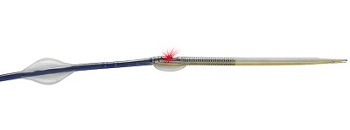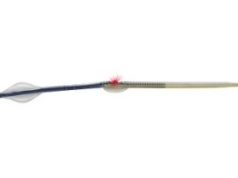
Avinger has announced positive two-year clinical data from the pivotal VISION study of the company’s Lumivascular technology. Twenty-four-month follow-up results from 89 patients were presented by Patrick Muck, chief of Vascular Surgery at Good Samaritan Hospital in Cincinnati, USA, at New Cardiovascular Horizons (NCVH) in New Orleans, USA. This includes an additional 34 patients beyond the interim data set presented on January 25, 2017.
Data presented remain subject to adjustment based on final statistical analysis and review by the study’s clinical events committee.
The VISION study was designed to evaluate the safety and effectiveness of Avinger’s Pantheris system to perform directional atherectomy while allowing physicians to use real-time intravascular imaging to aid in the removal of plaque from diseased lower extremity arteries. Data from the study, which demonstrated successful achievement of all primary and secondary safety and effectiveness endpoints, was used to support US Food and Drug Administration (FDA) 510(k) clearance of the system in 2016.
Key highlights of the presentation include:
– Kaplan Meier survival probability measured 82% freedom from target lesion revascularisation (TLR) at 12 months by patient (84% by lesion) and 74% freedom from TLR at 24 months by patient (76% by lesion)
– The VISION 24-month Kaplan Meier freedom from target lesion vascularisation at 24 months remained stable between 18 and 24 months
– Statistically significant improvements in ankle brachial index (ABI) and Rutherford classification at 30 days were maintained through 24 months
– A majority of lesions were treated using standalone optical coherence tomography (OCT) guided atherectomy with the Pantheris catheter, with only 9.6% (n=19/198) receiving adjunctive drug coated balloon (DCB) therapy and only 5% (n=10/198) receiving adjunctive stent therapy
“The complete VISION 24-month data demonstrates positive longer-term sustained results for patients treated with Pantheris, and importantly, these patients have largely avoided the need for a repeat procedure in a two-year timeframe,” comments Muck. “Considering that the outcomes were generated at the hands of brand new users with a first-generation clinical trial device, such positive results represent an important step forward for Pantheris in the clinical setting.”













